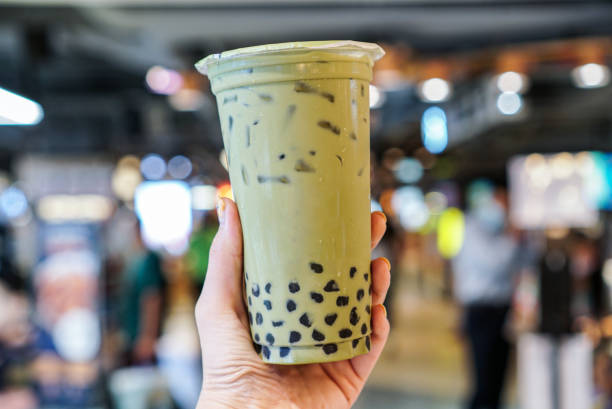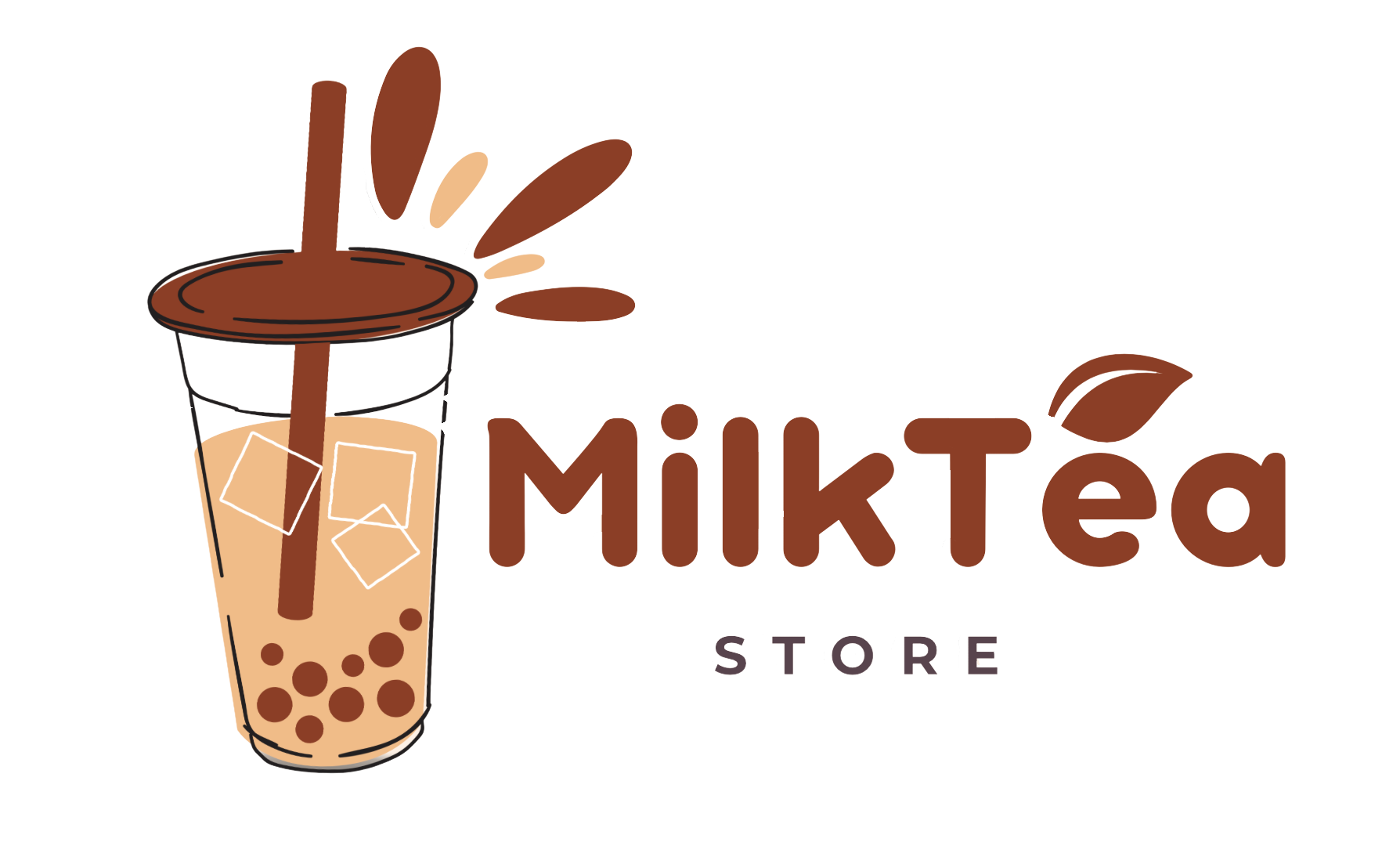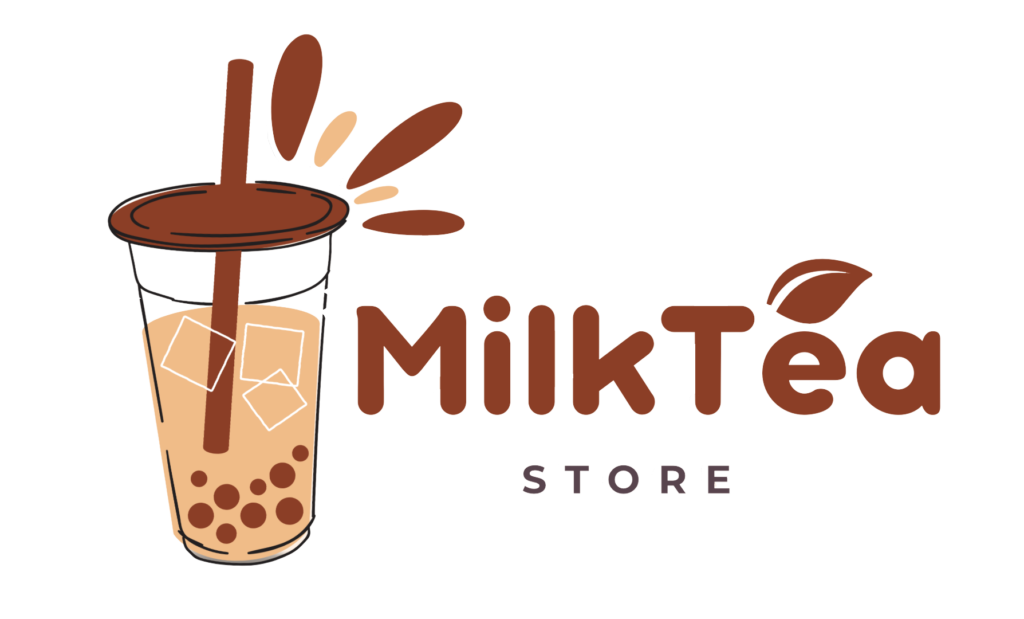Tea-riffic Tips for Crafting the Perfect Milk Tea: A 101 Guide to Tea Base Perfection
Milk tea has become a beloved beverage around the world, with its creamy and comforting flavors winning over the hearts of many. Whether you enjoy it hot or cold, milk tea has a way of satisfying your taste buds and providing a moment of relaxation. However, making the perfect cup of milk tea is an art that requires a deep understanding of the basics.
In this article, we will explore the history and origin of milk tea, the different variations available, and the importance of understanding the fundamentals to create a truly exceptional cup.
The Art of Milk Tea: Understanding the Basics
Milk tea, also known as bubble tea or boba tea, is a beverage that combines tea with milk and other flavorings. It originated in Taiwan in the 1980s and quickly gained popularity throughout Asia and eventually around the world. The combination of tea and milk creates a unique flavor profile that is both rich and refreshing.
There are several variations of milk tea, each with its own unique characteristics. Traditional milk tea is made with black tea, but there are also green tea, oolong tea, and even fruit-infused teas that can be used as a base. The addition of milk adds a creamy texture and enhances the flavor of the tea. Other flavorings such as syrups, sweeteners, and toppings like tapioca pearls or fruit jellies can be added to create different variations and add depth to the drink.
Choosing the Right Tea Base: A Guide to Tea Types
The type of tea you choose as a base for your milk tea will greatly impact its flavor. There are several types of tea to choose from, including black, green, oolong, white, and herbal teas. Each type has its own unique characteristics and flavor profiles.
- Black tea is the most commonly used base for milk tea due to its robust flavor and ability to stand up to the addition of milk. It has a rich and malty taste that pairs well with the creaminess of milk. Green tea, on the other hand, has a lighter and more delicate flavor. It is often used in milk teas for a more subtle and refreshing taste.
- Oolong tea is a semi-oxidized tea that falls somewhere between black and green tea in terms of flavor. It has a complex and floral taste that adds depth to milk tea. White tea is the least processed of all teas and has a delicate and slightly sweet flavor. It can be used as a base for milk tea for a more subtle and nuanced taste.
- Herbal teas, such as chamomile or peppermint, can also be used as a base for milk tea. These teas are caffeine-free and offer a wide range of flavors to experiment with. Ultimately, the choice of tea base depends on personal preference and the desired flavor profile of your milk tea.
Milk Tea Base Tea Comparison Table
| Tea Type | Characteristics | Flavor Profile | Best Suited For |
|---|---|---|---|
| Black Tea | Strong, bold flavor, full-bodied, malty notes | Rich, robust, can handle strong milk and sugar | Classic milk tea, taro milk tea, chocolate milk tea |
| Green Tea | Grassy, vegetal notes, slightly bitter, can be astringent | Light, refreshing, slightly sweet | Matcha milk tea, fruit-based milk teas, healthier milk tea options |
| Oolong Tea | Varies depending on oxidation level (light or dark), floral or roasted notes | Balanced, can be light or toasty, complex flavors | Traditional Taiwanese milk tea, oolong milk tea with cream cheese foam |
| White Tea | Delicate, subtle sweetness, floral or fruity notes | Light, clean, slightly floral | Light and refreshing milk teas, floral or fruity flavor combinations |
| Herbal Tea (Not technically tea from the Camellia sinensis plant) | Wide variety depending on herbs used (e.g., chamomile – calming, peppermint – minty) | Varies greatly depending on the herbs | Unique flavor profiles, caffeine-free milk tea options (watch for sugar content) |
The Importance of Water Temperature and Quality

The quality of water used to brew your tea is just as important as the tea itself. Water that is too hot or too cold can greatly affect the taste of your milk tea. It is recommended to use filtered water to ensure the best possible flavor.
The temperature at which you steep your tea will depend on the type of tea you are using. Black teas generally require boiling water, while green teas should be steeped at lower temperatures to avoid bitterness. Oolong teas fall somewhere in between, requiring water that is hot but not boiling.
To achieve the right water temperature, you can use a thermometer or simply bring the water to a boil and let it cool for a few minutes before steeping your tea. It may take some trial and error to find the perfect temperature for your preferred type of tea, but once you do, you will be rewarded with a perfectly balanced cup of milk tea.
| Tea Type | Ideal Temperature Range | Reasons |
|---|---|---|
| Black Tea | 195-205°F (90-96°C) | Full extraction of flavor compounds, robust body |
| Green Tea | 170-185°F (76-85°C) | Preserves delicate flavors, avoids bitterness |
| Oolong Tea | 180-200°F (82-93°C) | Varies depending on oxidation: lower temperature for lighter oolongs, higher for darker oolongs |
| White Tea | 175-185°F (79-85°C) | Extracts subtle sweetness and delicate aromas |
| Herbal Tea | Often 212°F (100°C), but some delicate herbs may prefer slightly lower | Varies depending on the specific herbal blend |
The Perfect Ratio: Tea to Milk to Sugar
The ratio of tea to milk to sugar is crucial in creating the perfect cup of milk tea. The ideal ratio will depend on personal preference and the type of tea being used. As a general guideline, a 1:1 ratio of tea to milk is a good starting point.
If you prefer a stronger tea flavor, you can increase the amount of tea used. Similarly, if you prefer a creamier and more indulgent milk tea, you can increase the amount of milk. The amount of sugar used can also be adjusted to taste. Some people prefer their milk tea on the sweeter side, while others prefer a more subtle sweetness.
It is important to use quality ingredients when making milk tea to ensure the best possible flavor. Use fresh tea leaves or high-quality tea bags, fresh milk or non-dairy alternatives, and pure cane sugar or natural sweeteners. Avoid using artificial flavorings or sweeteners as they can alter the taste of your milk tea.
The Role of Sweeteners: Honey, Syrups, and More
Sweeteners play an important role in enhancing the flavor of milk tea. There are several options to choose from, including honey, syrups, and even fruit purees. The choice of sweetener will depend on personal preference and the desired flavor profile.
Honey is a popular choice for sweetening milk tea due to its natural sweetness and unique flavor. It adds a subtle floral note that complements the tea and milk. Syrups, such as simple syrup or flavored syrups like caramel or vanilla, can also be used to sweeten milk tea. These syrups add depth and complexity to the drink.
Fruit purees or juices can be used as natural sweeteners and flavor enhancers in milk tea. They add a burst of fruity goodness and can be paired with different types of teas for unique flavor combinations. Experimenting with different sweeteners is a great way to create your own signature milk tea recipe.
The Science of Steeping: Time and Technique
The process of steeping tea is a delicate science that greatly affects the taste of milk tea. Steeping time and technique will vary depending on the type of tea being used.
Black teas generally require a longer steeping time, ranging from 3 to 5 minutes. Green teas, on the other hand, should be steeped for a shorter period of time, usually around 2 to 3 minutes. Oolong teas fall somewhere in between, requiring a steeping time of 3 to 4 minutes.
To achieve the perfect steep, it is important to follow the recommended steeping times for your chosen type of tea. Oversteeping can result in a bitter and unpleasant taste, while understeeping can result in a weak and flavorless cup. It may take some practice to find the right balance, but once you do, you will be rewarded with a perfectly brewed cup of milk tea.
The Magic of Boba: Incorporating Tapioca Pearls
Boba, also known as tapioca pearls, has become synonymous with milk tea. These chewy and sweet pearls add a fun and unique texture to the drink. Boba is typically cooked and then added to the milk tea before serving.
To cook boba, bring a pot of water to a boil and add the pearls. Cook for about 15 minutes or until the pearls are soft and chewy. Drain the pearls and rinse them with cold water to remove any excess starch. You can then add them to your milk tea along with any other desired toppings.
Boba comes in different sizes and flavors, so feel free to experiment and find your favorite. Some popular flavors include original, taro, matcha, and strawberry. Boba can be found at Asian grocery stores or online, making it easy to incorporate into your homemade milk tea.
The Perfect Topping: Whipped Cream, Chocolate, and More
Toppings are a fun and creative way to enhance the flavor and presentation of milk tea. Whipped cream, chocolate drizzle, and crushed cookies are just a few examples of popular toppings.
To make whipped cream at home, simply whip heavy cream with a little sugar until soft peaks form. You can also add flavorings such as vanilla extract or matcha powder for a unique twist. Whipped cream adds a creamy and indulgent touch to milk tea.
Chocolate drizzle can be made by melting chocolate chips or bars and drizzling the melted chocolate over the top of your milk tea. This adds a rich and decadent flavor that pairs well with the tea and milk.
Crushed cookies or graham crackers can be sprinkled on top of your milk tea for added texture and flavor. They add a delightful crunch and can be customized to your liking.
The Art of Presentation: Glassware and Garnishes
Presentation is an important aspect of enjoying milk tea. The right glassware can elevate the drinking experience and make your milk tea look even more enticing. Choose glassware that is clear and allows you to see the layers of tea, milk, and toppings.
Garnishes such as fresh fruit slices, mint leaves, or edible flowers can also be used to enhance the presentation of your milk tea. These garnishes add a pop of color and freshness to the drink.
When serving milk tea, consider using a wide straw or bubble tea straw to allow for easy sipping of the toppings. These straws are designed to accommodate the larger tapioca pearls or other toppings.
Experimenting with Flavors: Adding Fruit and Spices
One of the joys of making milk tea at home is the ability to experiment with different flavors. Adding fruit or spices to your milk tea can create unique and delicious combinations.
Fruit purees or juices can be added to your milk tea to create fruity and refreshing flavors. Some popular fruit options include mango, strawberry, peach, or lychee. Simply blend the fruit with a little water or milk and add it to your milk tea.
Spices such as cinnamon, cardamom, or ginger can be added to your milk tea for a warm and comforting flavor. These spices add depth and complexity to the drink and can be adjusted to taste.
Don’t be afraid to get creative and try different flavor combinations. The possibilities are endless, and you may discover a new favorite milk tea recipe along the way.
Troubleshooting Common Milk Tea Mistakes: Tips for Success
Making the perfect cup of milk tea can be a bit tricky, especially if you are new to the process. Here are some common mistakes to avoid and tips for troubleshooting:
– Oversteeping: If your milk tea tastes bitter, it may be due to oversteeping. To fix this, reduce the steeping time for your tea or use less tea leaves.
– Understeeping: If your milk tea tastes weak or flavorless, it may be due to understeeping. Increase the steeping time or use more tea leaves to achieve a stronger flavor.
– Watery Milk Tea: If your milk tea is too watery, it may be due to using too much water or not enough tea leaves. Adjust the ratios accordingly to achieve a more balanced flavor.
– Too Sweet: If your milk tea is too sweet, reduce the amount of sugar or sweetener used. You can also balance out the sweetness by adding more tea or milk.
– Not Sweet Enough: If your milk tea is not sweet enough, increase the amount of sugar or sweetener used. You can also try adding a flavored syrup for added sweetness.
Remember that making milk tea is a personal journey, and it may take some trial and error to find the perfect balance of flavors for your taste. Don’t be discouraged by mistakes, as they are opportunities to learn and improve.
In conclusion, making the perfect cup of milk tea is an art that requires a deep understanding of the basics. From choosing the right tea base to adjusting ratios and experimenting with flavors, there are many factors to consider. By understanding the fundamentals and taking the time to experiment and refine your technique, you can create a truly exceptional cup of milk tea. So why not give it a try? Grab your favorite tea, some milk, and get creative in the kitchen. You may just discover a new favorite beverage that brings joy and comfort to your everyday life.
Originally posted 2024-04-13 02:26:26.





